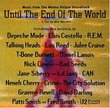| All Artists: Anthony Braxton Title: 3 Compositions of New Jazz Members Wishing: 4 Total Copies: 0 Label: Delmark Release Date: 9/18/1993 Genres: Jazz, Pop Style: Avant Garde & Free Jazz Number of Discs: 1 SwapaCD Credits: 1 UPCs: 038153041526, 038153041519 |
Search - Anthony Braxton :: 3 Compositions of New Jazz
 | Anthony Braxton 3 Compositions of New Jazz Genres: Jazz, Pop
The mid-'60s formation of Chicago's musician collective, the Association for the Advancement of Creative Musicians (AACM), proved a watershed event for jazz, providing a springboard for some of the next few decades' most i... more » |
Larger Image |
CD DetailsSynopsis
Amazon.com The mid-'60s formation of Chicago's musician collective, the Association for the Advancement of Creative Musicians (AACM), proved a watershed event for jazz, providing a springboard for some of the next few decades' most influential performers, including the Art Ensemble of Chicago, Muhal Richard Abrams, and Anthony Braxton. In many ways, Braxton's Three Compositions of New Jazz is that movement's manifesto. Seeking a new degree of abstraction and purity, Braxton opted to eschew drums or bass on these small group sessions, urging the musicians to concentrate on ensemble textures rather than tempo, forcing them to listen and interact without the support of steady, preconceived rhythms and melodies. The lineup, which includes pianist Muhal Richard Abrams on one side, and trumpeter Leo Smith and violinist Leroy Jenkins throughout, produces music that is at once organic and totally unlike the typical notion of a song or performance. Even Braxton's system of titling his work is radical: he assigns diagrams and numbers to each performance rather than a name. Braxton, who would become one of the most recorded composer/performers of the '70s and '80s, demonstrates a warmth of playing here that was often absent in his later albums. --Fred Goodman Similarly Requested CDs
|
CD ReviewsA Landmark Recording ! nadav haber | jerusalem Israel | 03/31/2002 (5 out of 5 stars) "If you are new to this music (recorded in the late 60's) - you might ask "why did anyone want to create something like that ?" I mean, there are barely any "rhythms", the are very few "solos", there are strange "sounds". This question is so important ! For me this question opened up so many possibilities - different approaches to rhythm, sound, arrangement... For one thing, Braxton rejects the notion that his music must have a constant drumbeat. Instead - he plays drums occasionally, more for the sound of it than as rhythmic support. Braxton uses many "sounds" - a whistle, a bell, a human voice, a harmonica, etc - they all contribute to the overall sound. The reed instruments (clarinet, sax), the piano, trumpet and the violin - carry most of the load, though, and are played magnificently. Braxton main freshness is, to me, in his approach to structure. He does not concentrate on sound and textures as such, but as part of an effective musical structure. The use of silence is prevailent throughout - something rarely attempted in "jazz" music. All compositions are intriguing. The first and longest is the most complex. The second has wonderful saxophone playing, and the 3rd has one of the greatest openings in "free jazz". This is a mind opener, and highly recommended as such." Collective improvisation Gazzelloni | Cincinnati, OH USA | 06/12/2008 (5 out of 5 stars) "This album for Delmark couldn't have been hated by critics more when it came out, a clue that can tell us something brilliant lies within. Everyone was comparing Braxton's group to that of Roscoe Mitchell during this period, and consequently many failed to see the album in a proper context. Many lampooned Braxton's debut for its lack of a rhythm section--untrue really, as Abrams uses the piano as percussion and Braxton does toss some drums in now and then. They said this recording was too detached, that it was too cold, too static. That critics failed to identify the visionary nature of this recording is not unusual, for most of the truly great avant-garde/free jazz recordings of this time period were misunderstood and abhorred.
The music spans from spacious intervals to energetic frenzies, and the presence of Leroy Jenkins on violin adds dimension to the pieces. The sounds are spectacular, leaving the listener to scratch their head at times if trying to figure out what instrument is doing what. Muhal Richard Abrams makes it clear why the piano is considered, first and foremost, a percussion instrument. Don't beat yourself up if you can't dig this after the first listen--it isn't background music. Its a hard one to make it through and is only for listeners who crave something beyond nice melody and harmony. Recommended" |

 Track Listings (3) - Disc #1
Track Listings (3) - Disc #1





